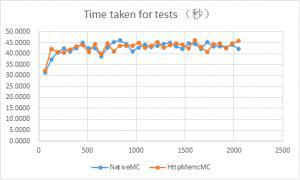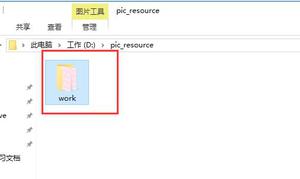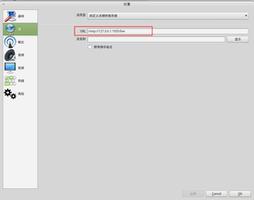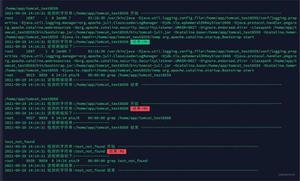基于Django rest framework 和Vue实现简单的在线教育平台

一、基于api前端显示课程详细信息
1、调整Course.vue模块
?
1 2 3 4 5 6 7 8 9 10 11 12 13 14 15 16 17 18 19 20 21 22 23 24 25 26 27 28 29 30 31 32 33 34 35 36 37 38 39 40 41 42 43 44 45 46 47 48 49 50 51 52 53 54 55 56 57 58 59 60 61 62 63 64 65 | <template>
<div>
<h1>课程列表</h1>
<div v-for="row in courseList">
<div style="width:350px;float: left;">
<!--<img src=""alt=""/>-->
<h3><router-link :to="{name:\'detail\', params:{id:row.id}}">{{row.title}}</router-link></h3>
<p>{{row.level}}</p>
</div>
</div>
</div>
</template>
<script>
exportdefault{
name: "index",
data() {
return{
courseList: []
}
},
mounted: function() {
this.initCourse()
},
methods: {
initCourse: function() {
varthat = this;
this.$axios.request({
url: \'http://127.0.0.1:8000/api/v1/course/\',
method: "GET"
}).then(function(ret) {
console.log(ret.data);
if(ret.data.code === 1000) {
that.courseList = ret.data.data
}else{
alert("获取数据失败");
}
}).catch(function(ret) {
})
}
}
}
</script>
<style scoped>
</style>
|
显示效果:
2、调整Detail.vue模块
?
1 2 3 4 5 6 7 8 9 10 11 12 13 14 15 16 17 18 19 20 21 22 23 24 25 26 27 28 29 30 31 32 33 34 35 36 37 38 39 40 41 42 43 44 45 46 47 48 49 50 51 52 53 54 55 56 57 58 59 60 61 62 63 64 65 66 67 68 | <template>
<div>
<h1>课程详细页面</h1>
<div>
<p>{{detail.course}}</p>
<p>{{detail.img}}</p>
<p>{{detail.level}}</p>
<p>{{detail.slogon}}</p>
<p>{{detail.title}}</p>
<p>{{detail.why}}</p>
<div>
<ul v-for="item in detail.chapter">
<li>{{item.name}}</li>
</ul>
</div>
<div>
<ul v-for="item in detail.recommends">
<li>{{item.title}}</li>
</ul>
</div>
</div>
</div>
</template>
<script>
exportdefault{
name: "index",
data() {
return{
detail: {
course: null,
img: null,
level: null,
slogon: null,
title: null,
why: null,
chapter: [],
recommends: [],
}
}
},
mounted() {
this.initDetail()
},
methods: {
initDetail() {
varnid = this.$route.params.id;
varthat = this;
this.$axios.request({
url: \'http://127.0.0.1:8000/api/v1/course/\'+ nid + \'/\',
method: \'GET\'
}).then(function(arg) {
if(arg.data.code === 1000) {
that.detail = arg.data.data
} else{
alert(arg.data.error)
}
})
}
}
}
</script>
<style scoped>
</style>
|
显示效果:
回到顶部
二、推荐课程切换及详情展示
1、测试使用router-link是否合适
对Detail.vue修改如下:
?
1 2 3 4 5 6 7 8 9 10 11 12 13 14 15 16 17 18 19 20 21 22 23 24 25 | <template>
<div>
<h1>课程详细页面</h1>
<div>
<p>{{detail.course}}</p>
<p>{{detail.img}}</p>
<p>{{detail.level}}</p>
<p>{{detail.slogon}}</p>
<p>{{detail.title}}</p>
<p>{{detail.why}}</p>
<div>
<ul v-for="item in detail.chapter">
<li>{{item.name}}</li>
</ul>
</div>
<div>
<h3>推荐课程</h3>
<ul v-for="item in detail.recommends">
<li><router-link :to="{name:\'detail\',params:{id:item.id}}">{{item.title}}</router-link></li>
</ul>
</div>
</div>
</div>
</template>
|
给推荐课程添加链接地址,点击可以实现url切换,但是由于组件没有重新加载,this.initDetail()没有执行。
因此页面的内容并不会发生切换。此方法不合适。
2、添加点击事件处理推荐课程点击切换
?
1 2 3 4 5 6 7 8 9 10 11 12 13 14 15 16 17 18 19 20 21 22 23 24 25 26 27 28 29 30 31 32 33 34 35 36 37 38 39 40 41 42 43 44 45 46 47 48 49 50 51 52 53 54 55 56 57 58 59 60 61 62 63 64 65 66 67 68 69 70 71 72 73 74 | <template>
<div>
<h1>课程详细页面</h1>
<div>
<p>{{detail.course}}</p>
<p>{{detail.img}}</p>
<p>{{detail.level}}</p>
<p>{{detail.slogon}}</p>
<p>{{detail.title}}</p>
<p>{{detail.why}}</p>
<div>
<ul v-for="item in detail.chapter">
<li>{{item.name}}</li>
</ul>
</div>
<div>
<h3>推荐课程</h3>
<ul v-for="item in detail.recommends">
<!--为推荐课程添加点击事件-->
<li @click="changeDetail(item.id)">{{item.title}}</li>
</ul>
</div>
</div>
</div>
</template>
<script>
exportdefault{
name: "index",
data() {
return{
detail: {
course: null,
img: null,
level: null,
slogon: null,
title: null,
why: null,
chapter: [],
recommends: [],
}
}
},
mounted() {
varid = this.$route.params.id;
this.initDetail(id)
},
methods: {
initDetail(nid) {
varthat = this;
this.$axios.request({
url: \'http://127.0.0.1:8000/api/v1/course/\'+ nid + \'/\',
method: \'GET\'
}).then(function(arg) {
if(arg.data.code === 1000) {
that.detail = arg.data.data
} else{
alert(arg.data.error)
}
})
},
changeDetail(id){
this.initDetail(id);
this.$router.push({name: \'detail\', params: {id:id}});
}
}
}
</script>
<style scoped>
</style>
|
注意:这里将var id = this.$route.params.id; 操作提到了vue生命周期mounted方法中。因此initDetail(nid)函数接收的nid,有可能是从mounted中传递过来的id也可以是changeDetail传递的id。
在 Vue 实例内部,你可以通过 $router 访问路由实例。因此你可以调用 this.$router.push。
?
1 | this.$router.push({name: \'detail\', params: {id:id}});
|
显示效果如下所示:
点击推荐课程可以自由切换页面路径和页面显示。
回到顶部
三、用户登录功能实现
1、前端添加Login.vue模块
(1)App.vue和index.js添加Login模块
?
1 2 3 4 5 6 7 8 9 10 11 12 13 14 15 16 17 18 19 20 21 22 23 24 25 26 27 28 29 | ############# App.vue ###############
<template>
<div id="app">
<router-link to="/index">首页</router-link>
<router-link to="/course">课程</router-link>
<router-link to="/micro">微职位</router-link>
<router-link to="/news">深科技</router-link>
<div>
<router-link to="/login">登录</router-link>
</div>
<router-view/>
</div>
</template>
############# index.js ###############
importLogin from \'../components/Login\'
Vue.use(Router);
exportdefaultnewRouter({
routes: [
{
path: \'/login\',
name: \'login\',
component: Login
},
]
})
|
(2)Login.vue构建
?
1 2 3 4 5 6 7 8 9 10 11 12 13 14 15 16 17 18 19 20 21 22 23 24 25 26 27 28 29 30 31 32 33 34 35 36 37 38 39 40 41 42 43 44 45 46 47 48 49 50 51 | <template>
<div>
<h2>用户登录</h2>
<div>
<p>
<input type="text"placeholder="请输入用户名"v-model="username">
</p>
<p>
<input type="password"placeholder="请输入密码"v-model="password">
</p>
<input type="button"value="登录"@click="doLogin">
</div>
</div>
</template>
<script>
exportdefault{
data(){
return{
username:\'\',
password:\'\'
}
},
methods: {
doLogin(){
this.$axios.request({
url:\'http://127.0.0.1:8000/api/v1/auth/\',
method:\'POST\',
data:{
user:this.username,
pwd:this.password
},
headers:{
\'Content-Type\': \'application/json\'
}
}).then(function(arg) {
console.log(arg)
}).catch(function(arg) {
console.log("发生错误")
})
}
}
}
</script>
<style scoped>
</style>
|
注意:这里是通过v-model双向绑定用户名和密码,并以此通过post请求来发送username和password。
2、django后台auth接口配置
(1)路由配置api/urls.py:
?
1 2 3 4 5 | urlpatterns =[
url(r\'^(?P<version>[v1|v2]+)/auth/$\', account.AuthView.as_view()),
]
|
(2)视图配置api/view/account.py:
?
1 2 3 4 5 6 7 8 | fromrest_framework.views importAPIView
fromrest_framework.response importResponse
classAuthView(APIView):
defpost(self, request, *args, **kwargs):
print(request.data)
returnResponse(\'...\')
|
(3)在前台页面尝试登陆
可以看到虽然配置的是post请求,但实际却发送的是OPTIONS请求。
3、跨域问题处理
(1)简单请求和非简单请求
浏览器将CORS请求分成两类:简单请求(simple request)和非简单请求(not-so-simple request)。
只要同时满足以下两大条件,就属于简单请求。
?
1 2 3 4 5 6 7 8 9 10 | (1) 请求方法是以下三种方法之一:
HEAD
GET
POST
(2)HTTP的头信息不超出以下几种字段:
Accept
Accept-Language
Content-Language
Last-Event-ID
Content-Type:只限于三个值application/x-www-form-urlencoded、multipart/form-data、text/plain
|
凡是不同时满足上面两个条件,就属于非简单请求。
如果是复杂请求,会先用options请求进行预检,通过之后才能发送post请求。
(2)配置修改account.py,添加options请求处理
?
1 2 3 4 5 6 7 8 9 10 11 12 13 14 15 16 17 18 19 20 21 | fromrest_framework.views importAPIView
fromrest_framework.response importResponse
fromdjango.shortcuts importHttpResponse
classAuthView(APIView):
defoptions(self, request, *args, **kwargs):
obj =HttpResponse(\'\')
obj["Access-Control-Allow-Origin"] ="*"
obj[\'Access-Control-Allow-Headers\'] ="Content-Type"
returnobj
defpost(self, request, *args, **kwargs):
print(request.data)
obj =Response("...")
obj["Access-Control-Allow-Origin"] ="*"
returnobj
|
再次访问登录页面,尝试登录操作,可以看到OPTIONS请求通过后,发送POST请求,python后端也打印出request.data中的数据。
(3)用中间件来处理跨域问题
上面这种方式过于麻烦了,一般还是交给中间件来处理跨域问题,为所有请求都设置头。
/api/cors.py:
?
1 2 3 4 5 6 7 8 9 10 11 12 13 14 15 16 17 18 | fromdjango.utils.deprecation importMiddlewareMixin
classCORSMiddleware(MiddlewareMixin):
defprocess_response(self, request, response):
response[\'Access-Control-Allow-Origin\'] ="*"
ifrequest.method =="OPTIONS":
response["Access-Control-Allow-Headers"] ="Content-Type"
returnresponse
|
4、rest-framework登录验证
(1)给models.py添加User和Token模型
?
1 2 3 4 5 6 7 8 | classUserInfo(models.Model):
user =models.CharField(max_length=32)
pwd =models.CharField(max_length=64)
classUserToken(models.Model):
user =models.OneToOneField(to="UserInfo", on_delete=models.CASCADE)
token =models.CharField(max_length=64)
|
利用makemigrations和migrate完成数据迁移操作。在UserInfo表添加用户和密码。
(2)后端处理登录信息,更新并创建token信息
重写/api/views/account.py如下所示:
?
1 2 3 4 5 6 7 8 9 10 11 12 13 14 15 16 17 18 19 20 21 22 23 24 25 26 27 28 29 30 | fromrest_framework.views importAPIView
fromrest_framework.response importResponse
fromdjango.shortcuts importHttpResponse
fromapi importmodels
importuuid
classAuthView(APIView):
defpost(self, request, *args, **kwargs):
print(request.data)
ret ={\'code\': 1000}
user =request.data.get("user")
pwd =request.data.get("pwd")
user =models.UserInfo.objects.filter(user=user, pwd=pwd).first()
ifnotuser:
ret[\'code\'] =1001
ret[\'error\'] ="用户名或密码错误"
else:
uid =str(uuid.uuid4())
models.UserToken.objects.update_or_create(user=user, defaults={"token":uid})
ret["token"] =uid
returnResponse(ret)
|
(3)登录验证
在vue前端登录,显示信息如下:
在python后台打印request.data信息:{\'user\': \'asdw\', \'pwd\': \'asdw131\'}、{\'user\': \'oldboy\', \'pwd\': \'123\'}。
5、用vuex实现在各个组件中共享值
(1)全局变量配置
1)创建/src/store文件夹,创建并编写store.js文件:
?
1 2 3 4 5 6 7 8 9 10 11 12 13 | importVue from\'vue\'
importVuex from\'vuex\'
//importCookie from\'vue-cookies\'
Vue.use(Vuex)
export default new Vuex.Store({
//组件中通过 this.$store.state.username 调用
state: {
username: null,
token: null,
},
})
|
组件中通过 this.$store.state.username 调用。
2)在main.js中引入store,并放入实例化组件中
?
1 2 3 4 5 6 7 8 9 10 11 12 13 14 15 16 17 18 19 20 | importVue from\'vue\'
importApp from\'./App\'
importrouter from\'./router\'
importaxios from\'axios\'
importstore from\'./store/store\'
//在vue的全局变量中设置了 $axios=axios
//以后每个组件使用时:this.$axios
Vue.prototype.$axios =axios;
Vue.config.productionTip =false;
/*eslint-disable no-new */
new Vue({
el: \'#app\',
router,
store, //放入实例化中
components: {App},
template: \'<App/>\'
})
|
(2)在所有组件中使用全局变量
Login.vue:
?
1 2 3 4 5 6 7 8 9 10 11 12 13 14 15 16 17 18 19 20 21 22 23 24 25 26 27 28 29 30 31 32 33 34 35 36 37 38 39 40 | <script>
export default {
data(){
return{
//通过v-model双向绑定用户名和密码
username:\'\',
password:\'\'
}
},
methods: {
doLogin(){
var that =this;
this.$axios.request({
url:\'http://127.0.0.1:8000/api/v1/auth/\',
method:\'POST\',
data:{
user:this.username,
pwd:this.password
},
headers:{
\'Content-Type\': \'application/json\'
}
}).then(function (arg) {
//拿回结果
if(arg.data.code ===1000){
//成功的情况下
that.$store.state.token =arg.data.token;
that.$store.state.username =that.username;
}else{
alert(arg.data.error)
}
}).catch(function (arg) {
//拿到错误信息
console.log("发生错误")
})
}
}
}
</script>
|
App.vue:
?
1 2 3 4 5 6 7 8 9 10 11 12 13 14 15 16 17 18 19 20 21 22 | <template>
<div id="app">
<router-link to="/index">首页</router-link>
<router-link to="/course">课程</router-link>
<router-link to="/micro">微职位</router-link>
<router-link to="/news">深科技</router-link>
<div v-if="this.$store.state.token">
<a href="">{{this.$store.state.username}}</a>
</div>
<div v-else>
<router-link to="/login">登录</router-link>
</div>
<router-view/>
</div>
</template>
<script>
exportdefault{
name: \'App\'
}
</script>
|
如此就可以通过获取全局变量实现用户登录效果:
但是这种登录状态,只要浏览器一刷新,登录状态就消失了,因此登录成功不仅要设置到全局变量,还要在cookie中放一份全局变量。
6、vue-cookies应用
(1)store.js
?
1 2 3 4 5 6 7 8 9 10 11 12 13 14 15 16 17 18 19 20 21 22 23 | importVue from \'vue\'
importVuex from \'vuex\'
importCookie from \'vue-cookies\'
Vue.use(Vuex);
exportdefaultnewVuex.Store({
state: {
username: Cookie.get("username"),
token: Cookie.get("token"),
},
mutations: {
saveToken: function(state, userToken) {
state.username = userToken.username;
state.token = userToken.token;
Cookie.set("username", userToken.username, "20min");
Cookie.set("token", userToken.token, "20min");
},
}
})
|
1)注意引入cookie的方法;
2)注意mutations方法。更改 Vuex 的 store 中的状态的唯一方法是提交 mutation。Vuex 中的 mutation 非常类似于事件:每个 mutation 都有一个字符串的 事件类型 (type) 和 一个 回调函数 (handler)。
3)组件中通过this.$store.commit(函数名, 参数)调用。
(2)Login.vue修改
?
1 2 3 4 5 6 7 8 9 10 11 12 13 14 15 16 17 18 19 20 21 22 23 24 25 26 27 28 29 30 31 32 33 34 35 36 37 38 39 40 | <script>
exportdefault{
data(){
return{
username:\'\',
password:\'\'
}
},
methods: {
doLogin(){
varthat = this;
this.$axios.request({
url:\'http://127.0.0.1:8000/api/v1/auth/\',
method:\'POST\',
data:{
user:this.username,
pwd:this.password
},
headers:{
\'Content-Type\': \'application/json\'
}
}).then(function(arg) {
if(arg.data.code === 1000){
that.$store.commit(\'saveToken\',{token: arg.data.token, username: that.username});
}else{
alert(arg.data.error)
}
}).catch(function(arg) {
console.log("发生错误")
})
}
}
}
</script>
|
(3)刷新仍在全局显示登录用户
(4)添加登出注销操作
App.vue:
?
1 2 3 4 5 6 7 8 9 10 11 12 13 14 15 16 17 18 19 20 21 22 23 24 25 26 27 28 | <template>
<div id="app">
<router-link to="/index">首页</router-link>
<router-link to="/course">课程</router-link>
<router-link to="/micro">微职位</router-link>
<router-link to="/news">深科技</router-link>
<div v-if="this.$store.state.token">
<a href="">{{this.$store.state.username}}</a>
<a @click="logout">注销</a>
</div>
<div v-else>
<router-link to="/login">登录</router-link>
</div>
<router-view/>
</div>
</template>
<script>
exportdefault{
name: \'App\',
methods:{
logout(){
this.$store.commit(\'clearToken\');
}
}
}
</script>
|
store.js:
?
1 2 3 4 5 6 7 8 9 10 11 12 13 14 15 16 17 18 19 20 21 22 23 24 25 26 27 28 29 | importVue from \'vue\'
importVuex from \'vuex\'
importCookie from \'vue-cookies\'
Vue.use(Vuex);
exportdefaultnewVuex.Store({
state: {
username: Cookie.get("username"),
token: Cookie.get("token"),
},
mutations: {
saveToken: function(state, userToken) {
state.username = userToken.username;
state.token = userToken.token;
Cookie.set("username", userToken.username, "20min");
Cookie.set("token", userToken.token, "20min");
},
clearToken: function(state) {
state.username = null;
state.token = null;
Cookie.remove("username");
Cookie.remove("token");
}
}
})
|
登出效果如下所示:
点击注销后显示效果:
回到顶部
四、拦截器
有些页面登录了才能访问,有些页面不需要登录即可访问。
1、页面访问登录判断
这里以micro模块为例,给模块添加登录判断,用户未登录时访问微职业,直接跳转到登录页面。
?
1 2 3 4 5 6 7 8 9 10 11 12 13 14 15 16 17 18 19 20 21 22 23 24 25 26 | <template>
<div>
<h1>LuffyX学位</h1>
</div>
</template>
<script>
exportdefault{
name: "index",
data() {
return{
}
},
mounted(){
if(!this.$store.state.token){
this.$router.push({name:"login"})
}
}
}
</script>
<style scoped>
</style>
|
但是对于组件很多的网站却不能这么处理,而是应该使用vue自带的拦截器来处理。
2、添加拦截器
(1)在路由控制中给需要拦截的路由配置meta字段
index.js:给需要拦截的路由配置meta字段
?
1 2 3 4 5 6 7 8 9 10 11 12 13 14 15 16 17 18 19 20 21 22 23 24 25 26 27 28 29 30 31 32 33 34 35 36 37 38 39 40 41 | exportdefaultnewRouter({
routes: [
{
path: \'/index\',
name: \'index\',
component: Index,
},
{
path: \'/course\',
name: \'course\',
component: Course
},
{
path: \'/detail/:id\',
name: \'detail\',
component: Detail
},
{
path: \'/micro\',
name: \'micro\',
component: Micro,
meta:{
requireAuth:true
}
},
{
path: \'/news\',
name: \'news\',
component: News,
meta:{
requireAuth:true
}
},
{
path: \'/login\',
name: \'login\',
component: Login
},
],
mode: \'history\'
})
|
(2)添加配置拦截器
main.js:
?
1 2 3 4 5 6 7 8 9 10 11 12 13 14 15 16 17 18 19 20 21 22 23 24 25 26 27 28 29 30 31 32 33 34 35 36 37 | importVue from \'vue\'
importApp from \'./App\'
importrouter from \'./router\'
importaxios from \'axios\'
importstore from \'./store/store\'
Vue.prototype.$axios = axios;
Vue.config.productionTip = false;
newVue({
el: \'#app\',
router,
store,
components: {App},
template: \'<App/>\'
});
router.beforeEach(function(to, from, next) {
if(to.meta.requireAuth) {
if(store.state.token) {
next()
} else{
next({path:\'/login\',})
}
} else{
next()
}
});
|
3、登录后直接显示登录前页面
比如在访问微职业时,由于没有登录跳转到了登录页面,输入账户密码登录后,显示的内容应该是微职业的内容。
(1)修改main.js中的拦截器
在url地址中添加返回的url:
?
1 2 3 4 5 6 7 8 9 10 11 12 13 14 15 16 | router.beforeEach(function(to, from, next) {
if(to.meta.requireAuth) {
if(store.state.token) {
next()
} else{
next({path:\'/login\', query:{backUrl: to.fullPath}})
}
} else{
next()
}
});
|
(2)Login.vue中修改登录操作
?
1 2 3 4 5 6 7 8 9 10 11 12 13 14 15 16 17 18 19 20 21 22 23 24 25 26 27 28 29 30 31 32 33 34 35 36 37 38 39 40 41 42 43 44 | <script>
exportdefault{
data(){
return{
username:\'\',
password:\'\'
}
},
methods: {
doLogin(){
varthat = this;
this.$axios.request({
url:\'http://127.0.0.1:8000/api/v1/auth/\',
method:\'POST\',
data:{
user:this.username,
pwd:this.password
},
headers:{
\'Content-Type\': \'application/json\'
}
}).then(function(arg) {
if(arg.data.code === 1000){
that.$store.commit(\'saveToken\',{token: arg.data.token, username: that.username});
varurl = that.$route.query.backUrl;
if(url) {
that.$router.push({path:url})
} else{
that.$router.push({path:\'/index\'})
}
}else{
alert(arg.data.error)
}
}).catch(function(arg) {
console.log("发生错误")
})
}
}
}
</script>
|
(3)登录验证
登录成功后显示效果:
回到顶部
五、用户认证
1、通过token进行用户认证
(1)配置micro的url和视图
api/urls.py:
?
1 2 3 4 | urlpatterns = [
"""省略"""
url(r\'^(?P<version>[v1|v2]+)/micro/$\', course.MicroView.as_view()),
]
|
Couse.py添加MicroView视图:
?
1 2 3 4 5 6 7 8 | classMicroView(APIView):
defget(self, request, *args, **kwargs):
token =request.query_params.get(\'token\')
obj =models.UserToken.objects.filter(token=token)
ifnotobj:
returnResponse("认证失败")
returnResponse("微职位")
|
(2)配置Micro.vue向后端发送GET请求
?
1 2 3 4 5 6 7 8 9 10 11 12 13 14 15 16 17 18 19 20 21 22 23 24 25 26 | <script>
exportdefault{
name: "index",
data() {
return{
title:null
}
},
mounted(){
this.initMicro()
},
methods:{
initMicro(){
this.$axios.request({
url:\'http://127.0.0.1:8000/api/v1/micro/\', // 这个地址如果被盗,任何人都可以获取数据
method:"GET",
params:{
token:this.$store.state.token
}
}).then(function(arg) {
console.log(arg);
})
}
}
}
</script>
|
这里需要注意不能只配置Url,这个地址如果被盗,则任何人都可以向后端发送请求获取数据。
因此配置params参数,在url地址后拼接token参数来发送请求:
(3)django访问检验
当token不正确时:
2、通过rest认证组件实现用户认证
(1) 在应用api下添加文件夹auth,添加auth.py文件
?
1 2 3 4 5 6 7 8 9 10 11 12 | fromrest_framework.authentication importBaseAuthentication
fromrest_framework.exceptions importAuthenticationFailed
fromapi importmodels
classLuffyAuth(BaseAuthentication):
defauthenticate(self, request):
token =request.query_params.get("token")
obj =models.UserToken.objects.filter(token=token).first()
ifnotobj:
raiseAuthenticationFailed({"code":1001, "error": "认证失败"})
return(obj.user.user, obj)
|
(2)在MicroVIew视图类中添加认证组件
?
1 2 3 4 5 6 7 8 9 | fromapi.auth.auth importLuffyAuth
classMicroView(APIView):
authentication_classes =[LuffyAuth]
defget(self, request, *args, **kwargs):
ret ={"code":1000, "title":"微职位"}
returnResponse(ret)
|
访问django页面验证:
(3)前端vue处理后端返回的数据
?
1 2 3 4 5 6 7 8 9 10 11 12 13 14 15 16 17 18 19 20 21 22 23 24 25 26 27 28 29 30 31 32 33 34 35 | <template>
<div>
<h1>LuffyX学位:{{title}}</h1>
</div>
</template>
<script>
exportdefault{
name: "index",
data() {
return{
title:null
}
},
mounted(){
this.initMicro()
},
methods:{
initMicro(){
varthat = this;
this.$axios.request({
url:\'http://127.0.0.1:8000/api/v1/micro/\', // 这个地址如果被盗,任何人都可以获取数据
method:"GET",
params:{
token:this.$store.state.token
}
}).then(function(arg) {
if(arg.data.code === 1000) {
that.title = arg.data.title
}
})
}
}
}
</script>
|
访问http://localhost:8080/micro,效果如下所示:
回到顶部
六、vue接口归总
1、在vuex中设置apiList字段归总所有rest接口
?
1 2 3 4 5 6 7 8 9 10 11 12 13 14 15 16 17 18 19 20 21 22 23 24 | importVue from \'vue\'
importVuex from \'vuex\'
importCookie from \'vue-cookies\'
Vue.use(Vuex);
exportdefaultnewVuex.Store({
state: {
username: Cookie.get("username"),
token: Cookie.get("token"),
apiList: {
course: \'http://127.0.0.1:8000/api/v1/course/\',
courseDetail: \'http://127.0.0.1:8000/api/v1/course/\',
auth: \'http://127.0.0.1:8000/api/v1/auth/\',
micro: "http://127.0.0.1:8000/api/v1/micro/",
}
},
mutations: {
}
})
|
2、替换各个模块中的url地址
均按照如下方法替换:
?
1 2 3 4 | url: this.store.state.apiList.micro,
url: this.store.state.apiList.course,
url: this.store.state.apiList.course + nid + \'/\',
url: this.store.state.apiList.auth,
|
以上是 基于Django rest framework 和Vue实现简单的在线教育平台 的全部内容,
来源链接:
utcz.com/z/374653.html








